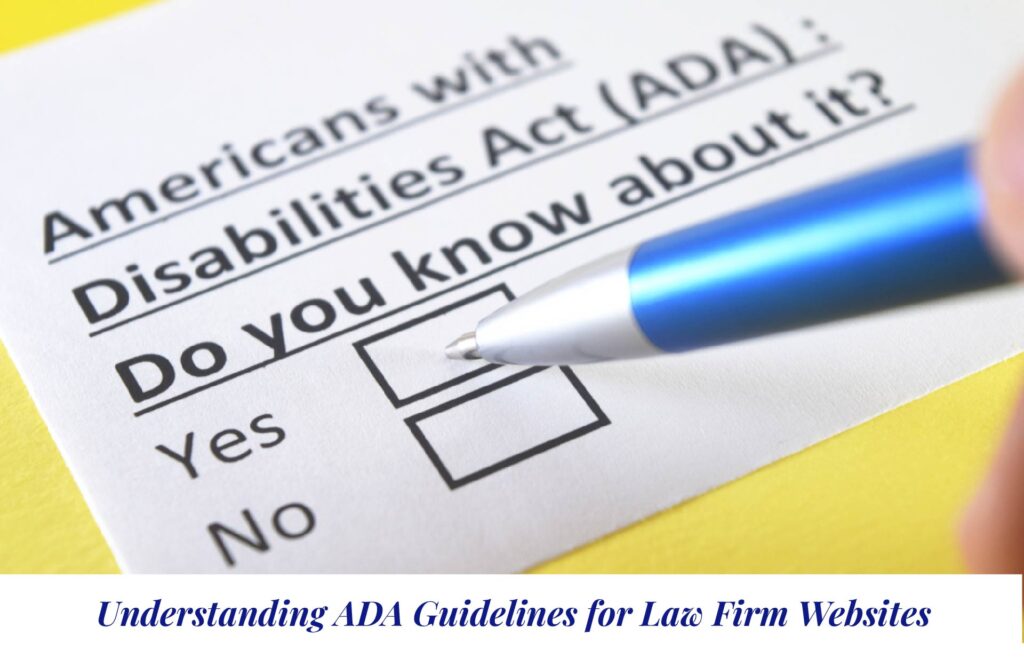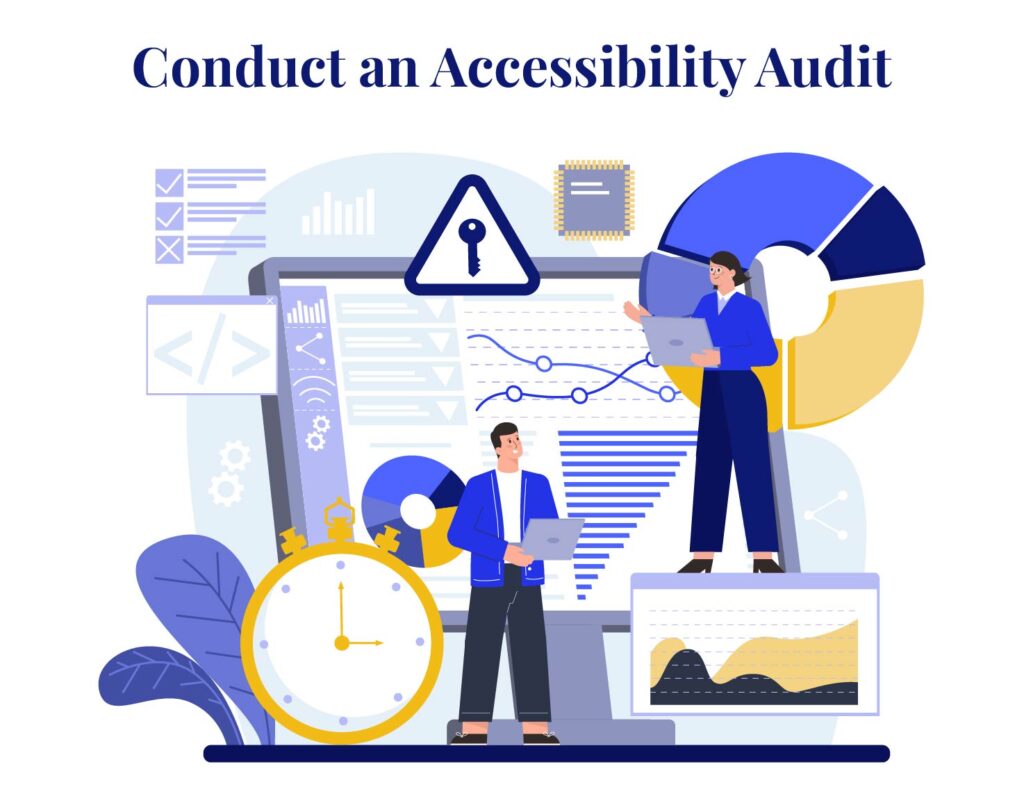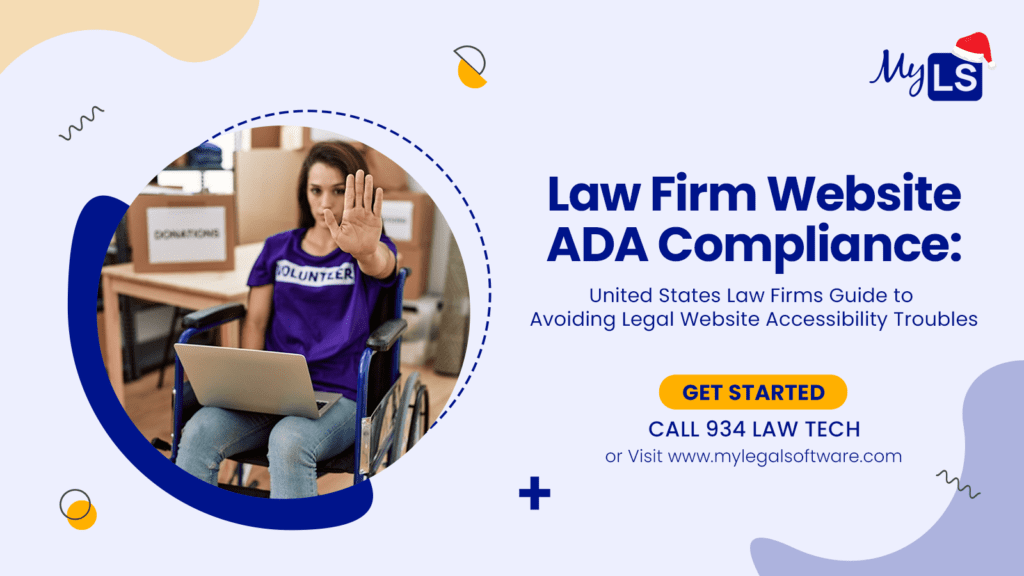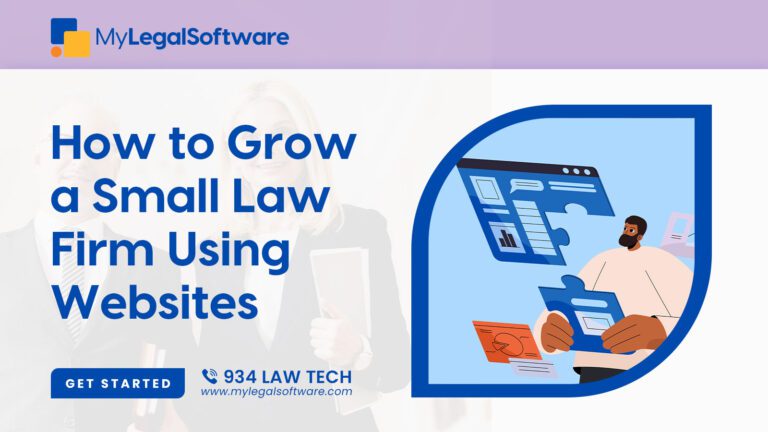“We want to open the internet. We want to make sure the online world is accessible to everyone. Everybody should be able to take advantage of it no matter who they are.”
– Shir Ekerling, Co-Chief Executive Officer and Co-Founder of AccessiBe.
Key Takeaways
- Understand the significance of ADA compliance for the betterment of legal service accessibility.
- Discover resources and guidelines designed to facilitate ADA compliance for law firm websites.
- Recognize the legal obligation and moral responsibility law firms have to provide accessible digital content.
- Learn actionable steps to ensure your website meets ADA standards and reflects your commitment to inclusivity.
- Explore the benefits of accessibility that extend beyond compliance, including enhanced client trust and service reach.
The importance of law firm website accessibility cannot be overstated. For law firms, a website is more than just a digital business card; it is a fundamental tool for providing services and information to all individuals, including those with disabilities. Ensuring your web presence adheres to legal website accessibility guidelines is not just ethically sound but also a legal imperative. With the right ADA compliance resources for law firms, you can navigate the complexities of the Americans with Disabilities Act (ADA) and uphold your commitment to inclusivity.
As professionals dedicated to upholding justice, law firms have a heightened responsibility to lead by example in ensuring equal access to information and services. A digitally accessible law firm’s website is a clear indicator of your firm’s dedication to serving a diverse clientele. Moreover, grasping how to ensure your law firm’s ADA compliance is an investment in your firm’s reputation and operational excellence. Let us walk you through the steps to achieving full accessibility and demonstrate the tangible value it brings to your legal practice.
Understanding ADA Compliance for Law Firm Websites

Within the evolving landscape of legal services, web accessibility for lawyers has become a cornerstone of modern practice. As law firms strive to serve a diverse clientele, the principles of the Americans with Disabilities Act (ADA) have extended beyond the physical office space into the digital realm, necessitating ADA website compliance for lawyers. This commitment to accessibility is not just a legal mandate but a moral one, ensuring that all potential clients have equal access to legal resources and services.
Legal blog posts about website accessibility often emphasize the critical components required for a website to be considered ADA-compliant. These components include, but are not limited to, text alternatives for non-text content, the ability for content to be presented in different ways, and functionality that is available from a keyboard. Such blog posts serve as an authoritative resource, guiding law firms through the often-complex process of website remediation.
“Web accessibility is not an optional feature, but a fundamental aspect of providing services to the public. In our digital age, law firm website ADA compliance is tantamount to opening your doors to everyone.” – Expert commentary from a leader in web accessibility.
Learning from those who have already undertaken the journey towards full-law firm website ADA compliance is invaluable. Through case studies and interviews with these pioneering firms, a roadmap of best practices emerges. Below is a table summarizing key steps taken by law firms to achieve ADA compliance:
Steps to ADA Compliance | Benefits Gained |
| Conducting an accessibility audit | Identification of current barriers |
| Implementing technical fixes | Enhanced user experience |
| Training staff on accessibility | Consistent, accessible content creation |
| Regularly reviewing and updating content | Maintained compliance standards. |

Beyond the technical aspects, a law firm’s responsibility encompasses fostering an inclusive digital space that resonates with their commitment to justice and equality. As web accessibility for lawyers becomes more intertwined with the practice of law, it is imperative that professionals within the legal sector are equipped with the knowledge to ensure compliance. These efforts not only safeguard the firm from potential legal ramifications but also solidify its reputation as a forward-thinking, client-centric institution.
ADA Compliance for Law Firm Websites: A Legal Requirement
Ensuring the accessibility of law firm websites is not simply a matter of good business practice; it is, more critically, a legal obligation. The Americans with Disabilities Act (ADA) has set forth clear directives that necessitate online environments to be as accessible as physical ones, thus dictating that law firms must take proactive steps to accommodate all users, regardless of their abilities.
What is the Americans with Disabilities Act (ADA)?
The ADA is a civil rights law that prohibits discrimination against individuals with disabilities in all areas of public life, including jobs, schools, transportation, and all public and private places that are open to the general public. Since its inception in 1990, the ADA has played a pivotal role in integrating individuals with disabilities into the mainstream of American life, including providing an equal playing field in the digital arena.
How the ADA Affects Law Firm Websites
With the expansion of the ADA’s scope to embrace digital accessibility, law firm websites must ensure that individuals with disabilities can access their content and services online. This evolution in legal interpretation means that a law firm’s online portal must be navigable, understandable, and operable by people who have diverse abilities, thus necessitating an ongoing commitment to maintaining ADA compliance for law firm websites.
Legal Consequences of Non-Compliance
Ignorance or negligence of ADA guidelines can lead to severe repercussions, including law firm website accessibility lawsuits. These legal challenges can not only damage the firm’s reputation but also carry substantial financial penalties. Therefore, avoiding legal website accessibility trouble is not merely about compliance but about upholding the ethical standards of legal practice and respecting the rights of all clients.
| Aspects of Compliance | Benefits | Risks of Non-Compliance |
| Website Navigability | Enables users with visual impairments to use screen readers effectively | May lead to inaccessibility claims and legal action |
| Content Clarity | Assists users with cognitive disabilities in understanding information | Can result in a loss of potential clients who cannot engage with content |
| Operability | Allows users with motor impairments to interact with the site via alternative inputs | Poses a risk of excluding a demographic and legal accusations of discrimination |
Incorporating ADA compliance as an intrinsic part of the design and maintenance of a law firm’s website is not just essential for avoiding legal trouble but also fundamental in making a law website accessible to all, aligning the firm’s practices with the values of inclusivity and equality.
Evaluating Your Website for ADA Accessibility
As law firms strive to serve a diverse clientele, the accessibility of their websites cannot be overlooked. An accessible website not only fosters inclusivity but also adheres to legal standards, reflecting a firm’s commitment to equality and professionalism. Ensuring your firm’s site meets ADA requirements can be a straightforward process with the right tools and knowledge.
Using ADA Compliance Checkers for Law Firms
To begin assessing your website’s compliance with the Americans with Disabilities Act (ADA), a variety of ADA compliance checkers designed specifically for law firms offer an excellent starting point. These tools provide free ADA compliance testing for law firms and can instantly pinpoint issues requiring attention. Here’s how to leverage these resources effectively:
- Choose an ADA compliance checker that caters to law firm requirements.
- Run the tool on your website to get an initial assessment of its accessibility level.
- Analyze the detailed report to identify specific areas of improvement.
- Make use of free resources that offer guidance on addressing the identified issues.
5 ADA Compliance Checkers for Law Firms in the United States
| Checker Name | Features | Pricing | Free Trial | Website |
| Deque WCAG Checker | In-depth accessibility analysis, WCAG 2.1/2.2 compliance checks, automated and manual testing, custom reports | Starts at $49/month | 7 days | https://www.deque.com/axe/ |
| WAVE Web Accessibility Evaluation Tool | A free, browser-based checker, highlights accessibility issues on individual web pages, generates reports. | Free | None | https://wave.webaim.org/sitewide |
| SiteImprove Accessibility | Integrated suite for web performance, SEO, and accessibility, automated and manual testing, custom reports, mobile-specific checks | Starts at $2,995/month | 14 days | https://my.siteimprove.com/ |
| A11Y Project’s axe-core | An open-source JavaScript library for accessibility checks, can be integrated into websites or used for manual testing. | Free | None | https://github.com/dequelabs/axe-core |
| UsabilityHub Accessibility Testing | User-based testing platform, recruit users with disabilities to test your website’s accessibility | Starts at $49/test | 5 free tests | https://www.lyssna.com/ |
Additional Tips
- Consider your budget and needs when choosing a checker. Free tools like WAVE are good for basic checks, while paid tools like Deque and Site Improve offer more comprehensive testing and reporting.
- Combine automated checks with manual testing for a more thorough assessment.
- Use a variety of checkers to get different perspectives on your website’s accessibility.
- Don’t rely solely on checkers; consider involving people with disabilities in your testing process.
Identifying Common ADA Violations on Law Firm Websites
Even with the right tools, identifying common ADA violations on law firm websites requires a discerning eye. Many issues are frequently overlooked during the design and development stages but can be easily remedied with the appropriate modifications.
- Lack of alt text for images, which is crucial for users with visual impairments.
- Insufficient contrast ratios for text make content difficult to read for those with low vision.
- Inaccessible navigation menus that pose barriers for those using screen readers.
- Missing form labels that are essential for understanding input fields in forms.
- Content that cannot be accessed through keyboard navigation is a necessity for individuals unable to use a mouse.
By systematically addressing these vulnerabilities, you enhance the user experience for all potential clients, while upholding compliance with ADA guidelines. Follow tips for designing an accessible law firm website, which include involving accessibility consultants, adhering to WCAG 2.1 guidelines, and routinely performing accessibility audits to ensure that new content and features maintain compliance over time.
Implementing Web Content Accessibility Guidelines (WCAG) for Law Firms
The digital landscape for legal services is advancing rapidly, making the incorporation of Web Content Accessibility Guidelines 2.0 (WCAG 2.0) a paramount objective for law firms aiming to provide equitable access to their services. As the industry becomes increasingly digitized, understanding and implementing these guidelines is essential for cultivating an inclusive online experience and maintaining ADA compliance.
Understanding WCAG 2.0 and Its Importance
WCAG 2.0 serves as the cornerstone for digital accessibility, offering a plethora of technical specifications designed to make content accessible to a broader range of people with disabilities, including blindness and low vision, hearing loss, learning disabilities, cognitive limitations, limited movement, speech disabilities, photosensitivity, and combinations of these. The legal industry, in recognizing the importance of WCAG 2.0, has begun to view these guidelines not only as a compliance measure but also as an element of corporate social responsibility.
Practical Steps to Make a Law Website Accessible
To achieve an ADA-compliant website, law firms must take actionable steps in accordance with accessibility best practices. These steps encompass everything from straightforward design tweaks to more extensive backend overhauls.
- Ensure all non-text content provides text alternatives that serve the equivalent purpose.
- Develop content that can be presented in different ways without losing meaning, especially for assistive technologies.
- Make all functionality available on a keyboard for users unable to operate a mouse.
- Create content that can be easily navigated and found, both for the site’s organization and on individual pages.
The cost of fixing an ADA-noncompliant law website can vary greatly, depending on the site’s complexity and the depth of issues. Proactive accessibility measures can mitigate these costs tremendously by ensuring compliance from the outset.
| Accessibility Feature | Impact on Users | Estimated Implementation Complexity |
| Text Alternatives for Non-Text Content | Enables content understanding for screen reader users | Low to Moderate |
| Keyboard-Navigable Content | Allows users with limited mobility to navigate effectively | Moderate |
| Aria Landmarks | Assists with content structure and navigation | Moderate to High |
| Color Contrast Optimization | Improves readability for users with visual impairments | Low to Moderate |
With adherence to these guidelines, law firms will not only avoid the potential financial repercussions of non-compliance but will also enhance their market reach and reputation. Case studies of law firms achieving ADA compliance demonstrate the positive outcomes of embracing web accessibility, ranging from improved user engagement to reduced legal risk.
The Cost and Benefits of Achieving ADA Website Compliance for Lawyers
The quest for ADA compliance poses a dual-edged sword for law firms: a strategic investment with upfront costs that can yield substantial benefits. While achieving legal marketing and ADA compliance may initially appear as a sizable endeavor, the long-term advantages and ROI make a persuasive case for action. A study of case studies of law firms achieving ADA compliance reveals a pattern of enhanced public perception and an expanded clientele.
| Consideration | Cost Implications | Benefits |
| Audit and Assessment | Initial investment in expert analysis to identify non-compliant areas | A clear roadmap to compliance and avoiding litigation. |
| Web Design and Development | Redesigning and coding for accessibility features | Improved user experience and broader market reach. |
| Training and Support | Ongoing training for staff on maintaining accessibility. | An empowered team equipped with knowledge of accessibility best practices for law firms. |
| Legal Protection | Possible legal fees saved by preempting non-compliance issues | Security against potential accessibility lawsuits. |
While the cost of fixing an ADA-noncompliant law website can vary based on its current state and the required level of overhaul, it is typically outweighed by the benefits. Implementing accessibility best practices for law firms not only safeguards against legal repercussions but also augments the firm’s reputation, signaling inclusivity and social responsibility.
- Increased Engagement: An accessible website welcomes a wider audience, including those with disabilities, resulting in heightened engagement and potential client retention.
- SEO Advantages: Search engines favor websites with accessible content, potentially boosting rankings and visibility in a competitive legal market.
- Brand Strengthening: Demonstrating commitment to ADA compliance enhances the firm’s brand, fostering trust and credibility among existing and prospective clients.
Conclusively, the pursuit of ADA compliance for a law firm’s website constitutes a valuable investment. It leads to a robust online presence that not only meets legal standards but also sets the stage for increased client satisfaction and business growth.
Best Practices and Tips for Designing an Accessible Legal Website
In an era where digital presence is synonymous with a brand’s reputation, ensuring accessibility in web design is not just about compliance; it’s about providing an inclusive online experience for all users. By embracing the diversity of users and their accessibility needs, law firms can create websites that are not only ADA-compliant but also welcoming and usable for everyone, demonstrating a commitment to equality and inclusivity in the legal profession.
Creating Inclusive and Accessible Design Elements
Designing an accessible law firm website starts with a focus on the user experience. Essential design elements that consider visual impairments, motor skill difficulties, and auditory disabilities are paramount. Here are some practical tips for designing an accessible law firm website:
- Ensure sufficient color contrast for text and background combinations to facilitate readability.
- Use a logical structure with heading tags to enable screen reader navigation.
- Provide text alternatives for non-text content, such as images and videos.
- Design forms with clear labels and instructions for easy interaction.
- Make sure that all functions can be performed via keyboard for users who can’t use a mouse.
Accessibility: Best Practices for Law Firms
It’s important for law firms to adopt the best practices recommended by digital accessibility experts when striving for an ADA-compliant law firm website. Here are some key steps:
- Regularly use automated tools and expert reviews to check for ADA compliance.
- Embed accessibility into your website’s development phase, not as an afterthought.
- Stay updated with the latest Web Content Accessibility Guidelines (WCAG) and legal requirements.
- Implement a robust accessibility policy and ensure all website content creators are trained on ADA guidelines.
Incorporating Feedback to Improve Accessibility
Continuous improvement is key to making a law website accessible. By actively seeking feedback from users with disabilities and conducting user testing, law firms can gather valuable insights and make informed adjustments. Consider integrating a feedback loop through:
- Online surveys are specifically designed to evaluate website accessibility.
- Focus groups with users who have a range of disabilities.
- Direct communication channels like feedback forms or email for user suggestions.
By taking these practical steps to make a law website accessible, not only do you comply with the ADA, but you also build trust and demonstrate a progressive and caring approach to your online audience.
Embracing ADA compliance: An ethical and strategic path to inclusive excellence for your law firm
At MyLegalSoftware, we believe achieving ADA website compliance for lawyers is more than just fulfilling a legal duty; it’s a necessary step towards fostering inclusivity, enhancing your online presence, and demonstrating your commitment to service excellence. While navigating the intricacies of legal website accessibility guidelines can seem complex, the benefits are manifold, both ethically and in quantifiable business terms.
Why MyLegalSoftware is your ideal partner for an ADA compliant legal website.
Expert guidance:
We navigate the complexities of ADA compliance for you, providing comprehensive website audits, remediation strategies, and ongoing support to ensure your site remains accessible.
Streamlined solutions:
We offer a range of ADA compliance services tailored to your firm’s needs, from automated scans and accessibility checkers to expert manual testing and accessibility consulting.
Peace of mind:
By partnering with MyLegalSoftwares, you gain the confidence that your website is accessible to all, mitigating legal risks and promoting trust with your diverse clientele.
Enhanced reach and engagement:
An accessible website opens doors to a broader audience, including those with disabilities, expanding your potential client base and fostering engagement with all visitors.
A commitment to inclusivity:
Choosing MyLegalSoftwares for ADA compliance reflects your firm’s values of inclusivity and equity, strengthening your brand image and building deeper trust with your community.
Don’t let the complexities of ADA compliance hold you back. Let MyLegalSoftwares guide the way, turning ethical commitment into a strategic advantage for your law firm.
Reap the Rewards of an ADA-Compliant Law Firm Website
The reward of ensuring your legal site meets ADA standards are ample. Not only does compliance minimize the risk of costly legal repercussions, but it also opens your firm to a wider client base, enhancing your firm’s reputation and potential for service. By implementing the measures discussed, such as accessibility checkers and adherence to WCAG guidelines, you ensure a robust platform where everyone, regardless of ability, can engage with legal services effectively. This commitment to accessibility is a testament to your firm’s dedication to upholding the tenets of justice and equality.
Next Steps Towards Compliance
For law firms poised to take the next steps towards compliance for law firm websites, the path is clear: conduct a thorough review of your site using the tools and resources discussed, implement the necessary design changes, and consider the user experience from all perspectives. Continual evaluation and refinement, informed by user feedback, will help maintain compliance.
MyLegalSoftware takes the stress off your law firm by maintaining an ADA-compliant website with its team of dedicated experts. As the digital landscape evolves, so too should your website’s accessibility feature, ensuring your firm remains a trusted and forward-thinking advocate for all clients seeking legal expertise.
Frequently Asked ADA Compliance Questions for Law Firms in the United States
Why is ADA compliance important for law firm websites?
ADA compliance ensures that law firm websites are accessible to all users, including those with disabilities. This is not only a matter of legal responsibility—given the protections provided by the Americans with Disabilities Act (ADA)—but also a demonstration of commitment to inclusivity, which can enhance a firm’s reputation and prevent potentially costly litigation.
What makes a law firm’s website ADA-compliant?
An ADA-compliant website for a law firm must be navigable, understandable, and usable for people with disabilities. This means that the website should accommodate assistive technologies like screen readers, offer alternative text for images, and ensure that all interactive elements are keyboard-accessible, among other criteria set forth by the Web Content Accessibility Guidelines (WCAG) 2.0.
What are the legal consequences of a law firm’s website not being ADA-compliant?
Non-compliance with the ADA can lead to legal trouble for law firms, including lawsuits and financial penalties. These legal actions can damage a firm’s reputation and result in substantial legal costs, making compliance an essential consideration for mitigating risk.
How can law firms check if their websites are ADA-compliant?
Law firms can use ADA compliance checker tools designed for law firms to evaluate their websites. These checkers often provide a report outlining areas of non-compliance and offer recommendations for remediation. It’s also advisable to consult with experts in web accessibility to conduct a thorough evaluation.
What common ADA violations should law firms look out for on their websites?
Common ADA violations include lack of alt-text for images, videos without captions, inaccessible forms, poor color contrast, and failure to offer keyboard navigation. Law firms should regularly assess their websites for these and other potential compliance issues.
What are the practical steps to make a law firm’s website accessible?
To make a website accessible, law firms should refer to WCAG 2.0 guidelines. Practical steps include implementing alt text for images, providing captions and transcripts for audio and video content, designing for keyboard-only navigation, ensuring sufficient color contrast, and creating content with clear headings and labels for easy screen reader interpretation.
What are the costs and benefits of making a law firm’s website ADA-compliant?
Cost considerations include initial audits, website design and development adjustments, and ongoing accessibility monitoring. Yet, the benefits outweigh the expenses as firms gain protection against legal risk, improve service to clients with disabilities, expand their audience, and reinforce their commitment to justice and equality.
What are the best practices for designing an ADA-compliant law firm website?
Best practices include following the WCAG 2.0 guidelines closely, focusing on text clarity, color contrast, and navigational structure, providing multimedia content with accessible features such as captions, regularly testing with users of varying abilities, and maintaining an openness to feedback for continual improvement.
How can law firms incorporate feedback to improve website accessibility?
Law firms can gather feedback through surveys, focus groups, and feedback forums. Client feedback, especially from users with disabilities, is invaluable in identifying accessibility barriers not recognized during standard compliance checks. This feedback should be used to inform iterative improvements to the website’s design and functionality.








